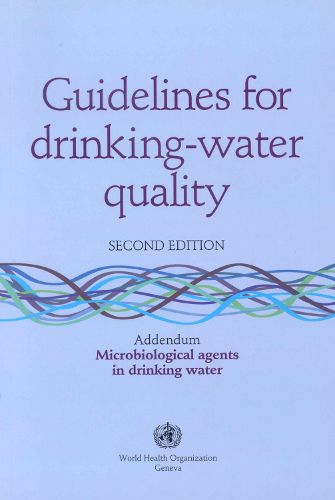Readings Newsletter
Become a Readings Member to make your shopping experience even easier.
Sign in or sign up for free!
You’re not far away from qualifying for FREE standard shipping within Australia
You’ve qualified for FREE standard shipping within Australia
The cart is loading…






This addendum to the second edition of the Guidelines for Drinking-Water Quality contains reviews of a number of pathogens that occur widely in water - aeromonas and legionella spp., vibrio cholerae, enteric hepatitis viruses, and protozoan parasites (cryptosporidium, giardia, and cyclospora spp.). These review documents supersede, and are more comprehensive than, those previously published in volumes 1 and 2 of the guidelines. Unlike the analogous chemical reviews in the guidelines, the microbiological review documents do not conclude with safe or tolerable exposure levels for the pathogens. The microgiological quality of drinking-water can vary rapidly and widely, and even brief exposures to pathogens may have serious health consequences. Analytical techniques for recognized pathogens nay be time-consuming and complex, and are not always available, and knowledge of the identity of waterborne pathogens is in any case incomplete. The microbiological reviews therefore summarize current knowledge of transmission, attenuation, and removal of the individual pathogens, and of the effecitiveness of measures for interrupting transmission.
$9.00 standard shipping within Australia
FREE standard shipping within Australia for orders over $100.00
Express & International shipping calculated at checkout
This addendum to the second edition of the Guidelines for Drinking-Water Quality contains reviews of a number of pathogens that occur widely in water - aeromonas and legionella spp., vibrio cholerae, enteric hepatitis viruses, and protozoan parasites (cryptosporidium, giardia, and cyclospora spp.). These review documents supersede, and are more comprehensive than, those previously published in volumes 1 and 2 of the guidelines. Unlike the analogous chemical reviews in the guidelines, the microbiological review documents do not conclude with safe or tolerable exposure levels for the pathogens. The microgiological quality of drinking-water can vary rapidly and widely, and even brief exposures to pathogens may have serious health consequences. Analytical techniques for recognized pathogens nay be time-consuming and complex, and are not always available, and knowledge of the identity of waterborne pathogens is in any case incomplete. The microbiological reviews therefore summarize current knowledge of transmission, attenuation, and removal of the individual pathogens, and of the effecitiveness of measures for interrupting transmission.